

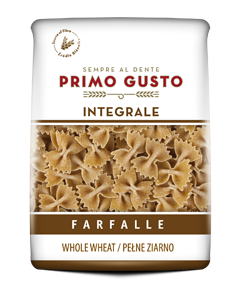
This beautiful type of pasta originally comes from the Italian regions of Lombardy and Emilia-Romagna and is formed by pressing the two longer sides of a rectangular piece of dough into the middle to create the shape of a butterfly (“farfalla” in Italian) or bow-tie.
Thanks to their fancy bow-tie shape, farfalle add charm to any dish that they are used in. This pasta is ideal in salads since it works perfectly with larger sized ingredients, such as broccoli florets or pieces of chicken.
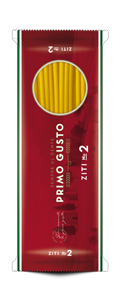

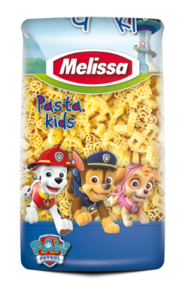
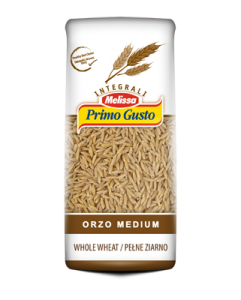

500 g

12'-14'

The highest quality, gluten free pasta made from corn flour and wholemeal flour.

400 g

13'-15'

The highest quality, gluten-free pasta made from corn flour and wholemeal flour.

400 g

11'-13'
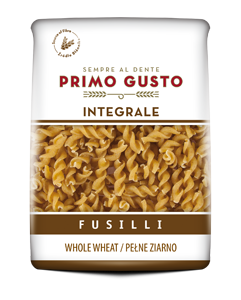
The most popular type of whole grain pasta to include in a range of dishes and salads.

500 g
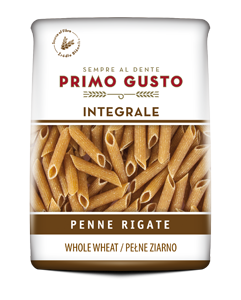
A popular, versatile pasta which fits to all kinds of dishes, for instance, with sauces or in salads. This whole grain pasta is perfect for anyone who is health-conscious and loves pasta!

500 g

A combination of spaghetti and tagliatelle, this flattened version of spaghetti comes from the Italian coastal region Ligurii. Interestingly, the name “linguine” means “tongues”.
While spaghetti is most often combined with tomatoes and meat, Italians commonly add pesto (preferably the original Ligurian pesto Genovese) or seafood to linguine pasta to create a meal that incorporates all the riches of the region.
Along with these traditional aspects of linguine, this pasta is ideal for many different casseroles, egg frittata, or Asian dishes.

500 g

10'-12'
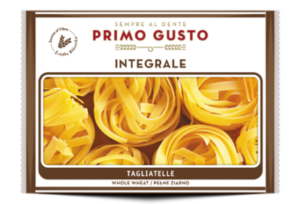
Tagliatelle is a long and wide (8mm) form of pasta and is a classic in Italy. At first, tagliatelle was seen as an exclusive product and was only available for few people. However, this has changed with time and a large proportion of people around the world now enjoy this delicious pasta.
Tagliatelle is served well with heavy, dense meat sauces, but also tastes great with creamy sauces (e.g. Carbonara) or seafood. The alla Bolognese version encompasses the treasures of the Italian Emilia-Romagna region, the origin of both tagliatelle pasta and Bolognese sauce.

500 g

8'-9'

Unlike spaghetti, this long, round pasta includes a small hole in the middle (“buco” in Italian means “hole”) and gives a beautiful volume to a dish.
Bucatini is particularly popular in Sicily as well as in Rome where it is often served with amatriciana sauce made with bacon, tomatoes and pecorino cheese. Bucatini pasta also tastes delicious when served with fresh herbs and butter. You can almost smell this beautiful flavour in the air!

500 g

11'-13'
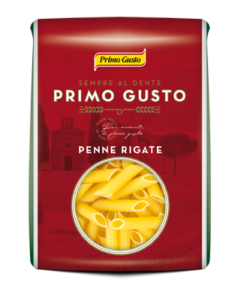
This pasta has a tube-like, cylindrical shape with ridges on its surface in order to hold as much sauce as possible.
Penne may be served with a range of ingredients, however it fits best with denser sauces as well as dishes consisting of larger pieces of vegetables or meat and therefore, is often found in salads and casseroles. A common dish which includes this type of pasta is the spicy penne all’Arabiata made with chilli, garlic and basil. However, thanks to the versatility of penne, one may be very creative when cooking with this pasta since it always tastes great.
Available as traditional, whole grain, tri-color or bio penne.

500 g, 3000 g

14'-15'

This pasta has a spiral shape (“fuso” in Italian means “spiral”) and is formed through the gentle twisting of pasta dough.
The ridges in fusilli enable a lot of sauce to be absorbed and therefore, this pasta is often used in cooking. It is great to add to soups – tomato soup lovers would find it difficult to imagine a different type of pasta to eat their soup with. Fusilli also fits wonderfully in tomato or mushroom casseroles, as well as other baked dishes.
Available as traditional, whole grain, tri-color or bio fusilli.

500 g, 3000 g

7'-8'
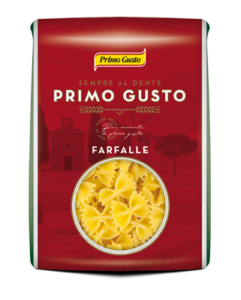
This beautiful type of pasta originally comes from the Italian regions of Lombardy and Emilia-Romagna and is formed by pressing the two longer sides of a rectangular piece of dough into the middle to create the shape of a butterfly (“farfalla” in Italian) or bow-tie.
Thanks to their fancy bow-tie shape, farfalle add charm to any dish that they are used in. This pasta is ideal in salads since it works perfectly with larger sized ingredients, such as broccoli florets or pieces of chicken.

500 g, 3000 g

12'-13'
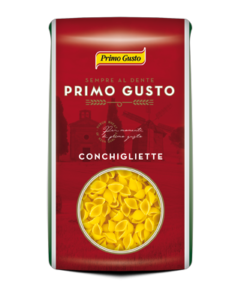
This small shell-like pasta is an excellent addition to soups as well as salads. For children, it is a great introduction into the adventurous world of pasta. Does the idea of small shells sailing in an ocean of chicken soup not sound extremely compelling?

500 g

8'-10'
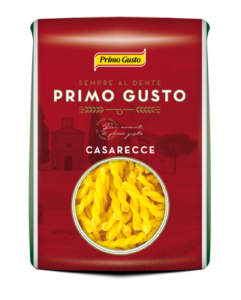
This lightly coiled pasta with a braid-like shape absorbs as much sauce as possible; its unique shape is able to visually enrich any meal.
Casarecce means “homemade” in Italian which, in relation to its Sicilian roots, brings to mind the image of a large family gathered around a dinner table, admiring a homemade casserole. This pasta is ideal for family gatherings!

500 g

13'-14'

With its wave-like shape, fale is the perfect type of pasta to use in soups. It fits however also splendidly with thicker sauces.

500 g

4'-5'

This small, tubular pasta fits ideally in casseroles as well as light salads with little amount of sauce. Classic dishes with corals use ingredients such as egg, cream and yellow cheese; it is therefore not surprising that “macaroni and cheese” is such a craze in America.

500 g

9'-11'


500 g

Green olives stuffed with tomatoes that have been exquisitely dried in the warm Mediterranean climate. They are ideal to add to salads and sauces, and as a snack on their own.

250 ml
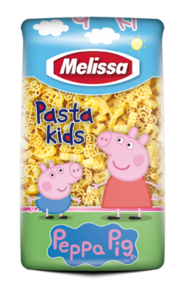
Eating couldn’t be any more fun!

500 g
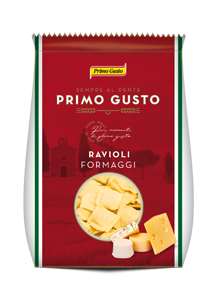
Small dumplings with a cheese filling; they taste delicious in combination with a sauce and parmesan cheese.

250 g
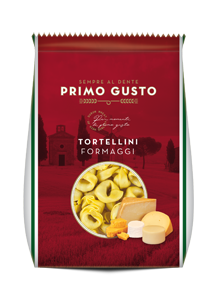
Very easy to prepare and simply delicious - with just a sprinkle of cheese on top, the dish is ready!
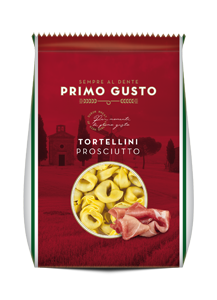
Small dumplings with a meat filling which are a great alternative to traditional dumplings. It is definitely worth trying them with borscht soup.

250 g
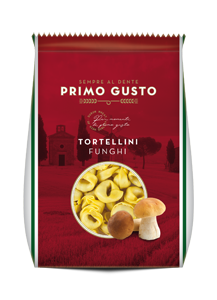
These mushroom tortellini taste great both when served hot or as a salad base.

250 g
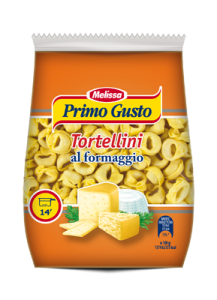
Very easy to prepare and simply delicious - with just a sprinkle of cheese on top, the dish is ready!

250 g
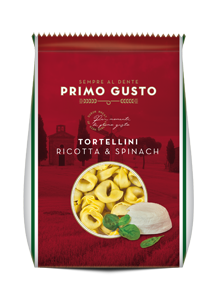
Small dumplings with spinach and ricotta cheese – the perfect vegetarian option!

250 g
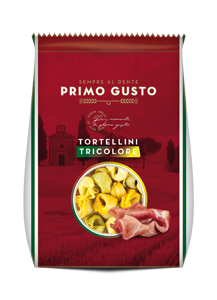
These colourful tortellini fit perfectly in salads.

250 g

Eating couldn’t be any more fun!

500 g
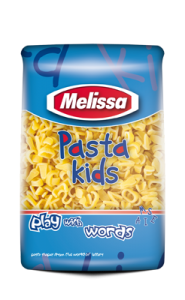
With these unique shapes, eating becomes even more joyful, creative and delicious!

500 g
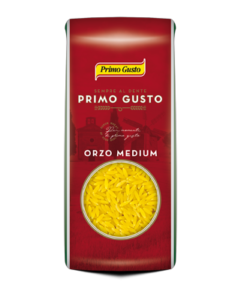

500 g

13'-15'

This large, shell-like pasta fits wonderfully in salads or casseroles and is an exciting alternative to penne or farfalle. Gnocchi also form a beautiful dish when served with seafood.

500 g

Lasagne is one of the oldest known types of pasta. The name “lasagne” originates from the Greek word “laganon” which means “thin sheet of dough”. This thin, rectangular pasta has its roots in Greece and is believed to have been adapted in Italy where it then became known as a delicacy.
Lasagne is prepared in the form of a layered casserole, where, in between layers of dry pasta, one may find different delicious fillings, including béchamel sauce and grated cheese (preferably Italian parmesan or cheddar). Lasagne is a dish which allows room for creativity and experimentation in relation to its ingredients. Aside from the traditional Bolognese Lasagne with meat or the vegetarian Neapolitan lasagne, one may come across recipes including spinach, tuna, seafood, and even pumpkin or kale. Thanks to this, cooking lasagne is never boring and the example of the comic character Garfield proves that it is simply a culinary delight!

500 g

30'-40'
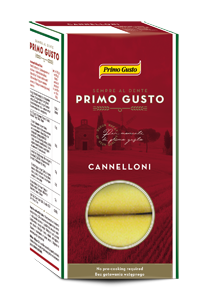
This large, hollow, tube-like pasta is filled with stuffing and is baked. Cannelloni is believed to have been invented in the early twentieth century by Nicola Federico, a chef working in Sorrento. It then became more popular during the Second World War, when many people fled the bombings in Naples and went to Sorrento.
Cannelloni may be filled with any stuffing: meat, vegetables, or cheese. The top layer is usually covered with a tomato or cream sauce and the entire dish is sprinkled with cheese to give the casserole a delicious taste once it is taken out of the oven. Like with Lasagne, there is large room for creativity and experimentation in relation to the ingredients used with cannelloni.

250 g

25'-30'
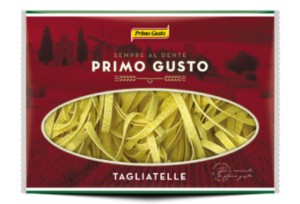
Tagliatelle is a long and wide (8mm) form of pasta and is a classic in Italy. At first, tagliatelle was seen as an exclusive product and was only available for few people. However, this has changed with time and a large proportion of people around the world now enjoy this delicious pasta.
Tagliatelle is served well with heavy, dense meat sauces, but also tastes great with creamy sauces (e.g. Carbonara) or seafood. The alla Bolognese version encompasses the treasures of the Italian Emilia-Romagna region, the origin of both tagliatelle pasta and Bolognese sauce.

500 g

6'-7'
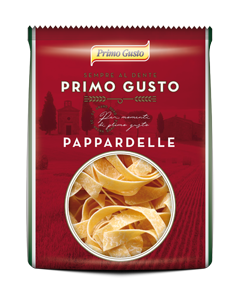
Pappardelle is a thin and flat form of pasta which is wider than the classic tagliatelle. The addition of eggs gives them a fluffy structure and, along with this, pappardelle are absorbent and tough. This means they are perfect to serve with dense meat sauces, or even with stew. There are plenty of dishes that can be cooked with this pasta, explaining the reason for choosing the name “pappare”, which means “devour”.

250 g

10'

Spaghetti is one of the most popular types of pasta; it has been consumed in Southern Europe for centuries now and is prepared in a large variety of ways.
This long, delicate pasta works best with light and creamy sauces and winds onto a fork beautifully to ensure a fun meal for every child. What better way is there to regain the feeling of being on holiday than to eat authentic Mediterranean spaghetti combined with fresh, juicy tomatoes? What more could you ask for?
Available as traditional, whole grain, tri-color or bio spaghetti.

500g, 1000g

6'-8'

The most popular type of pasta made from whole-grain flour which retains all of the most precious elements of nature.

500 g

This tube-like pasta is shaped to enable as much sauce as possible to collect inside of it.
Penne may be served with a range of ingredients, however it fits best with denser sauces as well as dishes consisting of larger pieces of vegetables or meat and therefore, is often found in salads and casseroles. A common dish which includes this type of pasta is the spicy penne all’Arabiata made with chilli, garlic and basil. However, thanks to the versatility of penne, one may be very creative when cooking with this pasta since it always tastes great.
Available as traditional, whole grain, tri-color or bio penne.

500 g

The most popular addition to a range of dishes and salads; it is produced through organic farming.

500 g
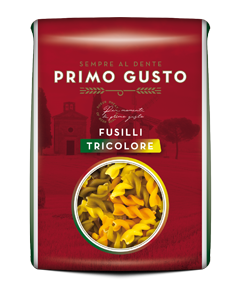
The most popular addition to a range of dishes and salads and the perfect way to make any dish more exciting.

500 g

The most popular type of pasta that is produced through organic farming.

500 g

The most popular type of pasta produced in three unique colours.

500 g